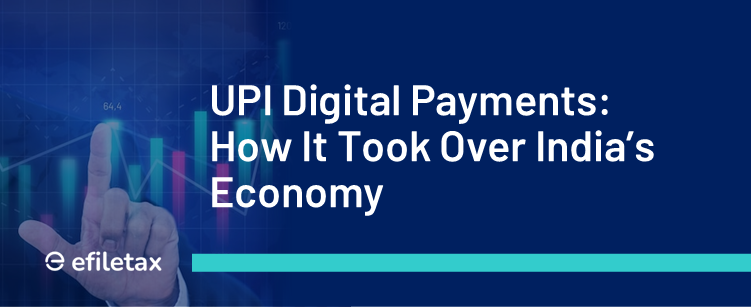
The Rise of UPI in India’s Digital Economy
In less than a decade, the Unified Payments Interface (UPI) has revolutionized India’s payment ecosystem, becoming the backbone of digital transactions. Launched in 2016 by the National Payments Corporation of India (NPCI), UPI allows instant money transfers between bank accounts via smartphones, eliminating the need for traditional banking processes.
With its rapid adoption, UPI now accounts for over 80% of India’s digital transactions, making it the preferred mode of payment for millions of users.
UPI’s Unstoppable Growth
UPI’s exponential growth is evident from its transaction volumes:
| Financial Year | Total UPI Transactions (in billion) | Total Transaction Value (₹ Lakh Crore) |
|---|---|---|
| 2017-18 | 0.92 | 1.09 |
| 2019-20 | 12.5 | 21.3 |
| 2022-23 | 74.0 | 126.5 |
| 2023-24 (Oct) | 16.58 (monthly) | 23.49 (monthly) |
Key Observations:
- Compound Annual Growth Rate (CAGR) of 129% in transactions since 2017.
- Crossed ₹23.49 lakh crore in transaction value in October 2024 alone.
- UPI is expanding globally, with several countries looking to adopt India’s payment model.
Why is UPI So Successful?
Several factors have contributed to UPI’s dominance:
1. Interoperability Across Banks
UPI connects multiple banks on a single platform, allowing seamless transactions between users, regardless of their bank. This fosters a truly unified digital payment system.
2. Government Push for Digital Payments
Government initiatives like Digital India, Jan Dhan Yojana, and demonetization (2016) accelerated the adoption of UPI, making digital transactions a necessity.
3. Cost-Effective and Instant
Unlike traditional banking methods that involve fees, UPI transactions are free or have minimal charges, making it an attractive choice for both consumers and businesses.
4. Robust Security & Fraud Prevention
NPCI has implemented multi-factor authentication, tokenization, and real-time fraud monitoring, ensuring secure transactions.
5. Rising Smartphone and Internet Penetration
With over 750 million smartphone users and affordable internet, India has the perfect infrastructure for UPI’s expansion.
Regulatory Framework & Legal Aspects
The rapid rise of UPI has led to increased regulatory oversight to ensure fair competition and security. Key regulations include:
1. RBI Oversight Under the Payment and Settlement Systems Act (2007)
The Reserve Bank of India (RBI) monitors and regulates digital payment services to ensure financial stability.
2. NPCI’s Role in Market Competition
To prevent market monopolization, NPCI introduced a 30% cap on market share for third-party UPI apps like Google Pay and PhonePe, though its implementation has been delayed.
3. Cybersecurity & Consumer Protection
With rising digital frauds, RBI and NPCI enforce mandatory two-factor authentication and real-time fraud detection mechanisms.
Challenges and the Future of UPI
Despite its success, UPI faces several challenges:
1. Cybersecurity Threats
With increasing digital transactions, fraudsters are finding new ways to exploit security loopholes, making continuous security enhancements essential.
2. Balancing Market Share Among Players
UPI transactions are dominated by a few major players like PhonePe, Google Pay, and Paytm, raising concerns about a monopolized payment system.
3. Infrastructure for Rural Expansion
While UPI adoption is high in urban areas, its penetration in rural India needs improvement through better internet connectivity and financial literacy programs.
4. Global Expansion
NPCI has been working on expanding UPI internationally, with discussions to implement similar systems in Singapore, UAE, and African countries.
Conclusion: The Future of UPI
UPI has cemented itself as the leader in India’s digital payments landscape, making cashless transactions accessible to all. With ongoing innovations, including UPI Lite, UPI for credit transactions, and global partnerships, the system is poised for even greater expansion.